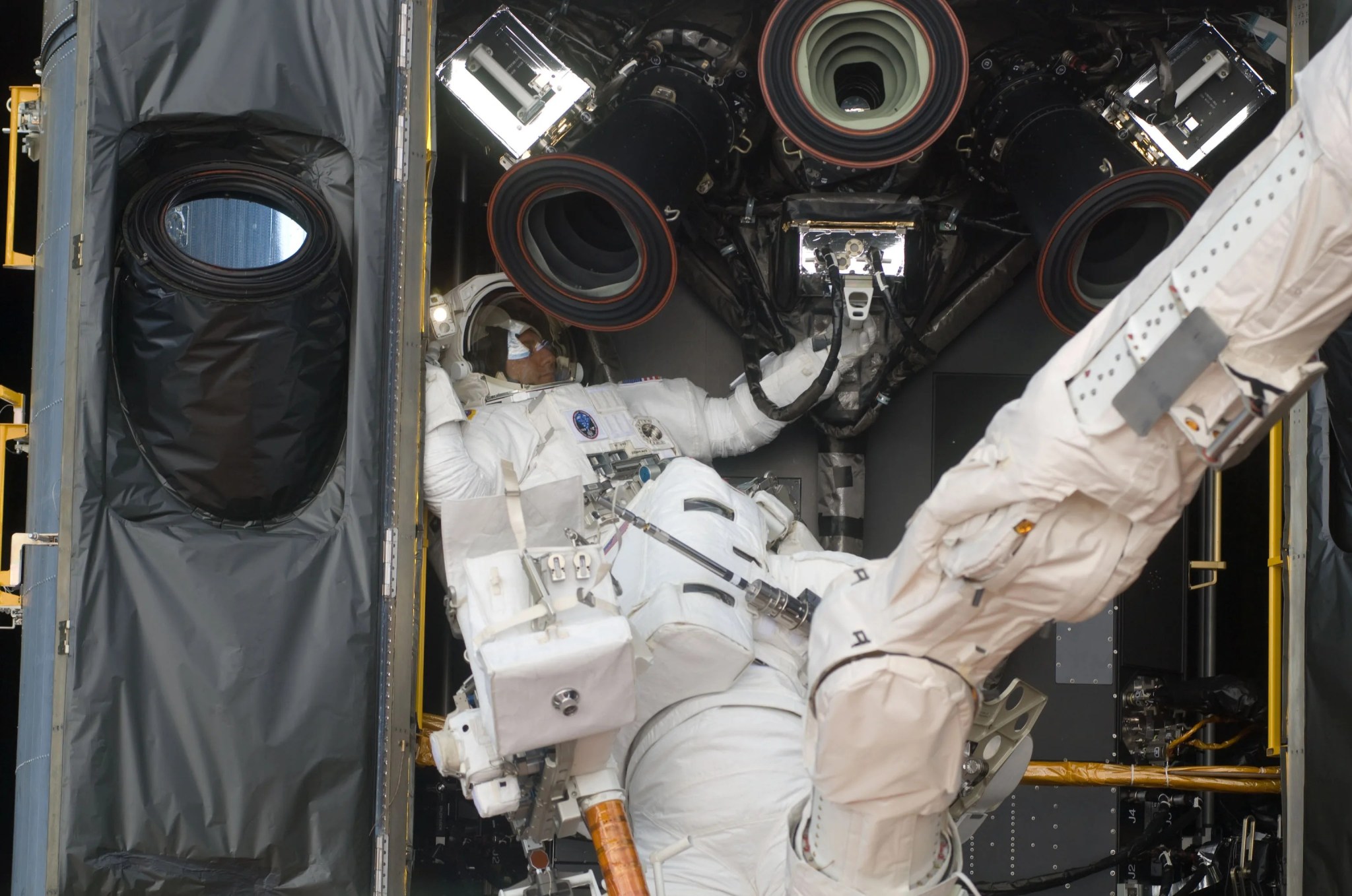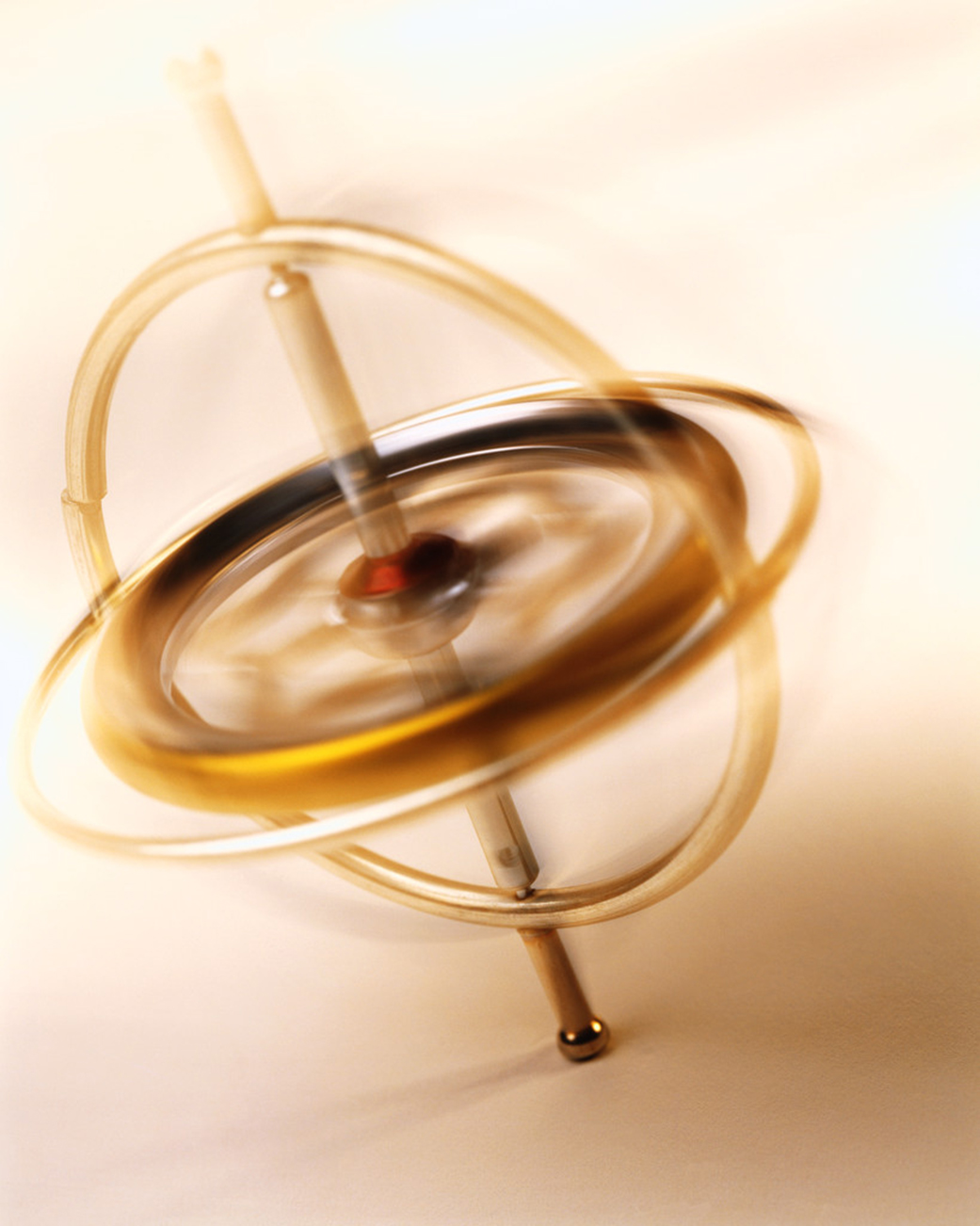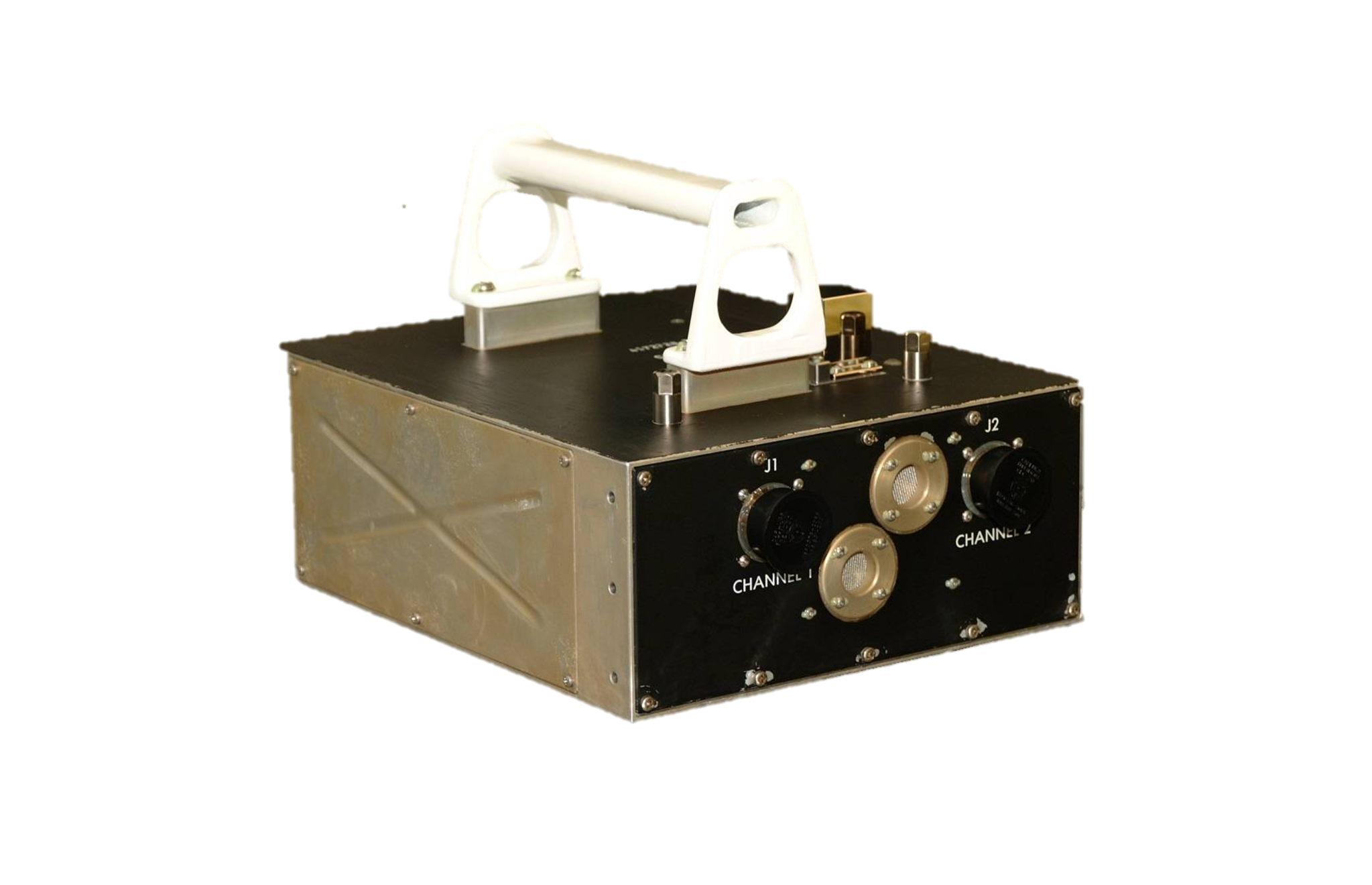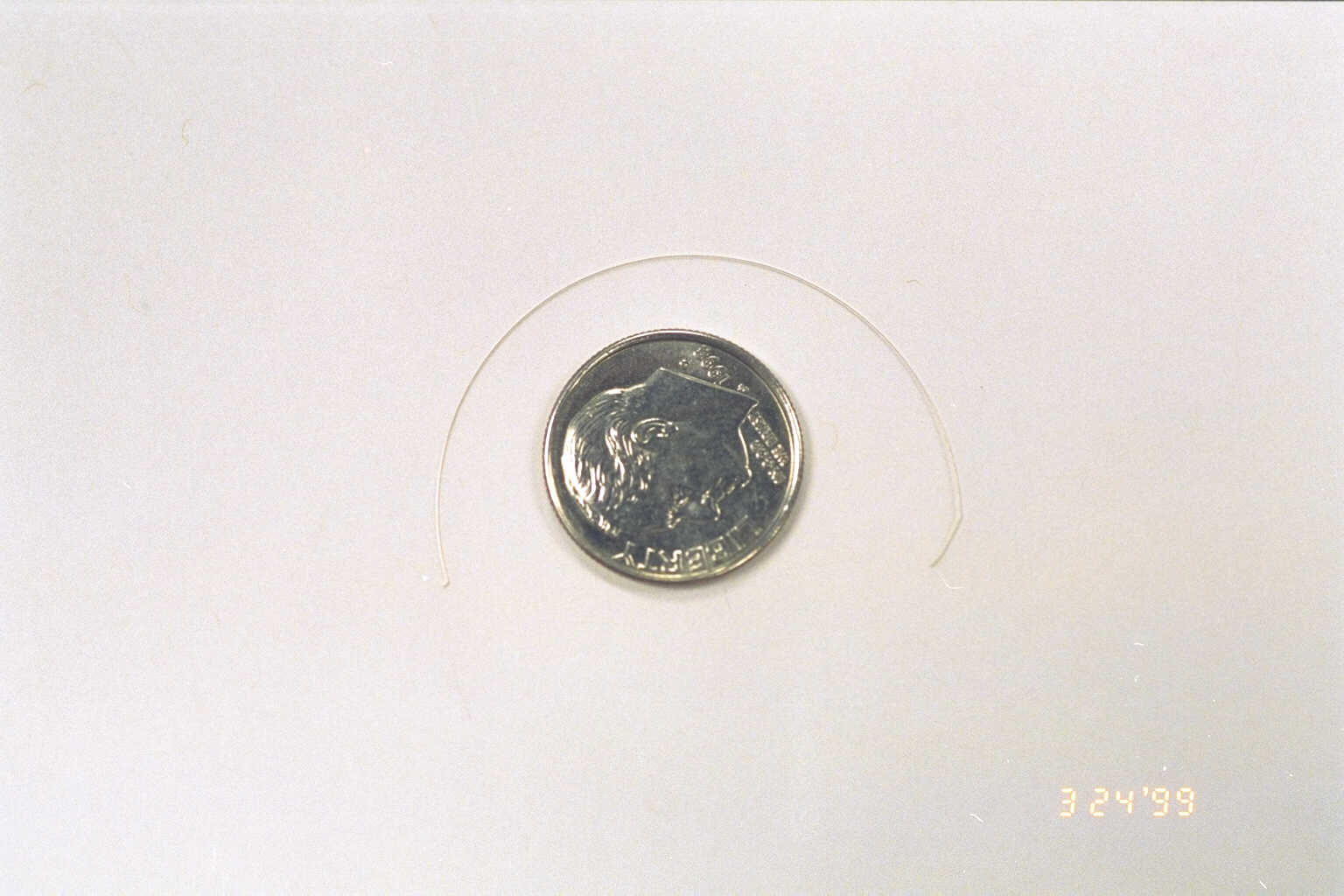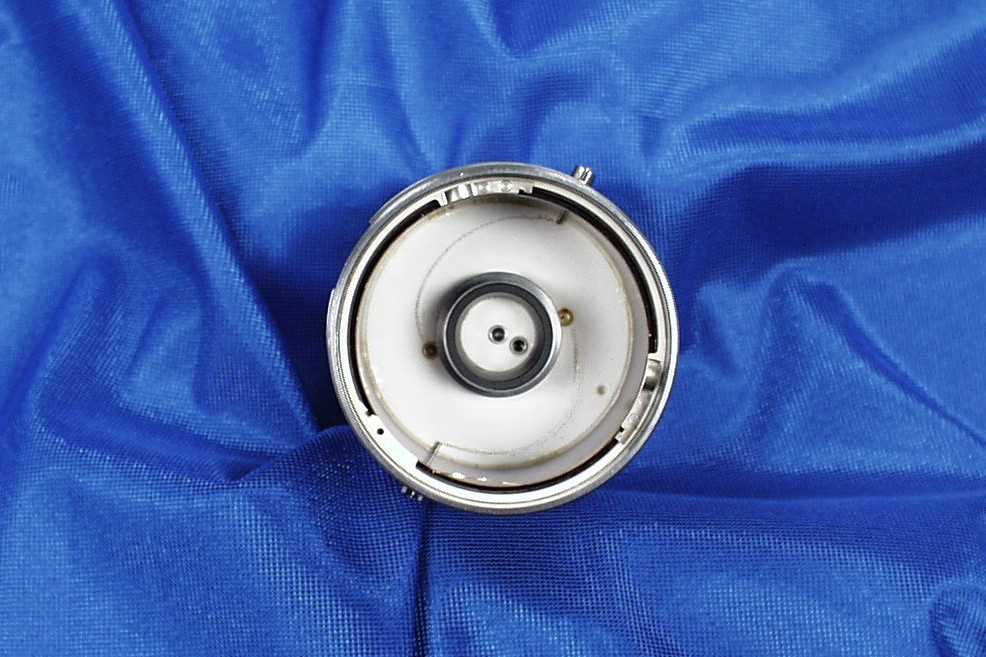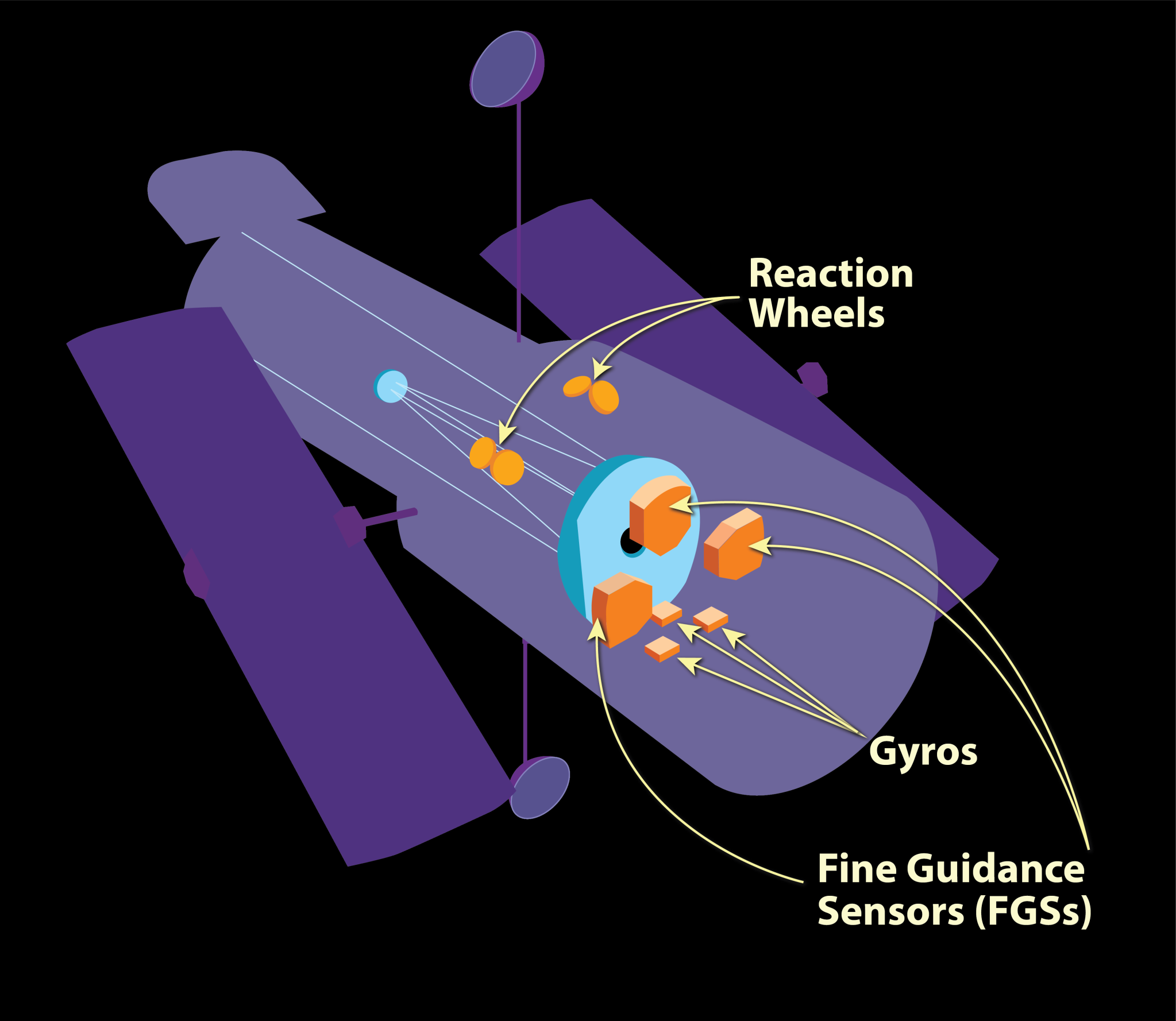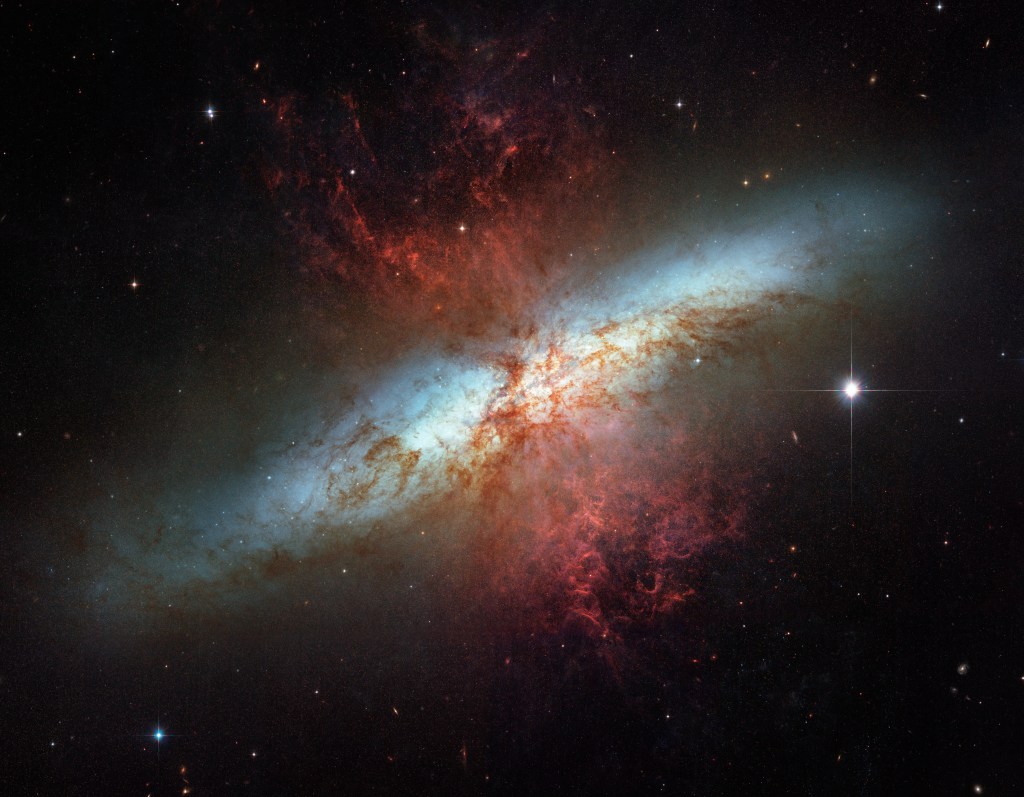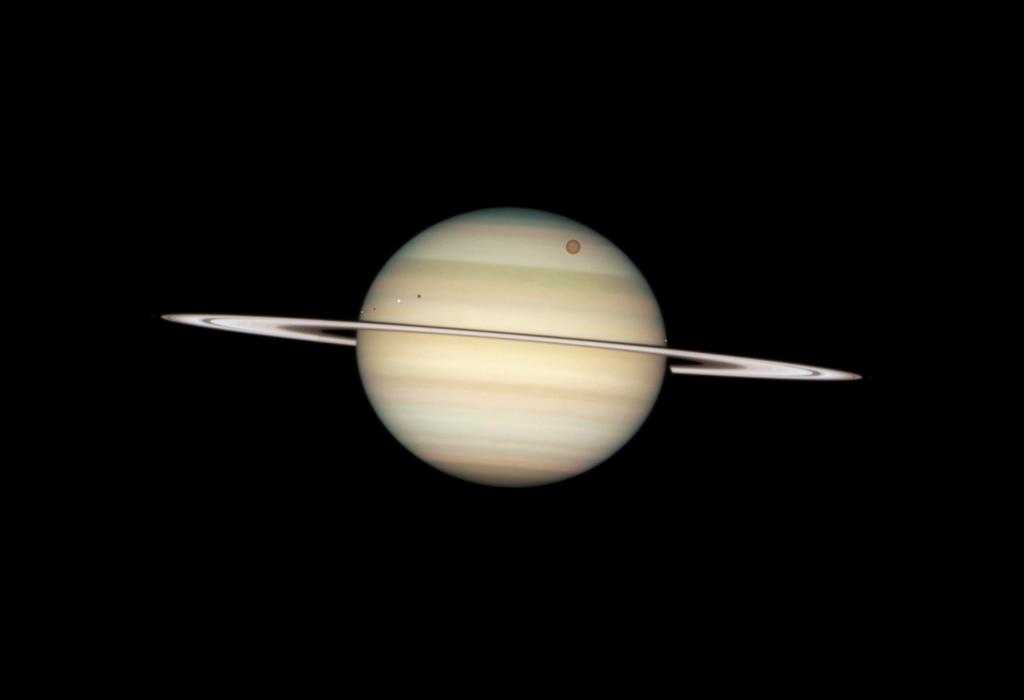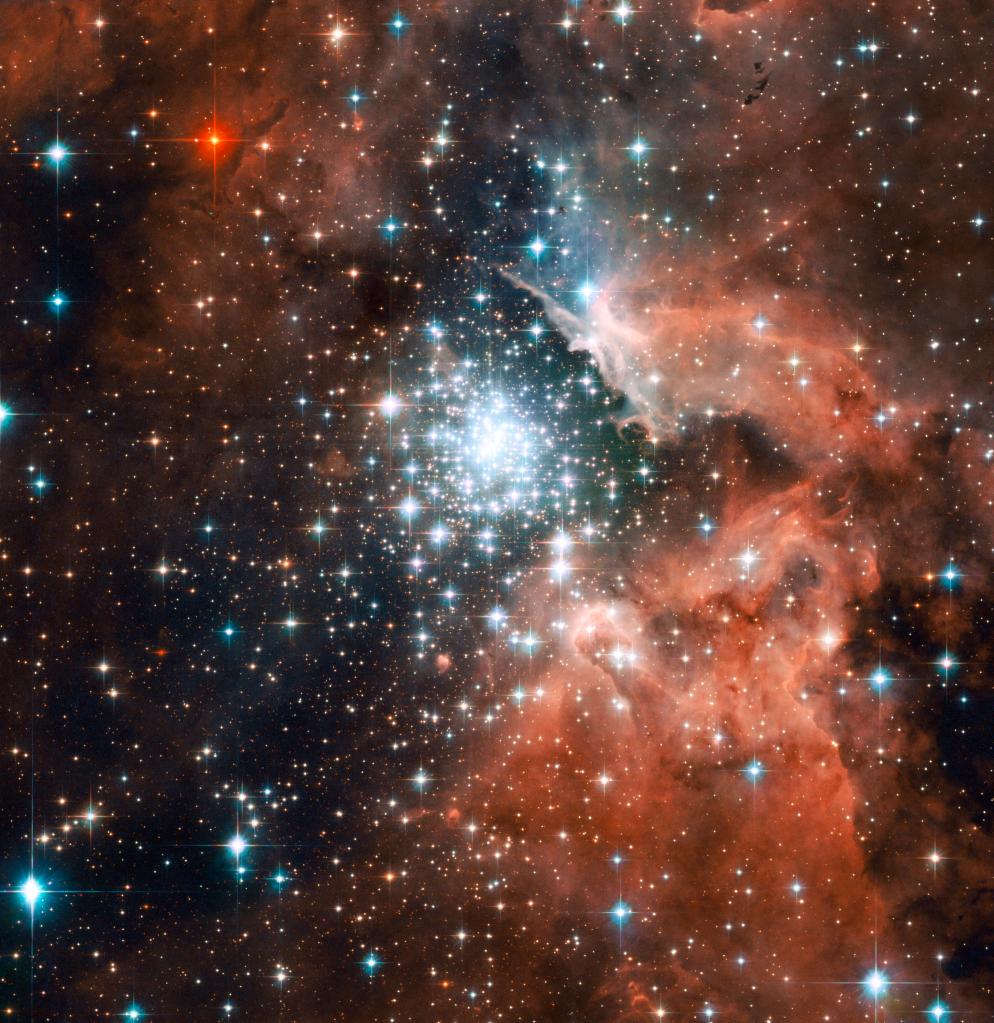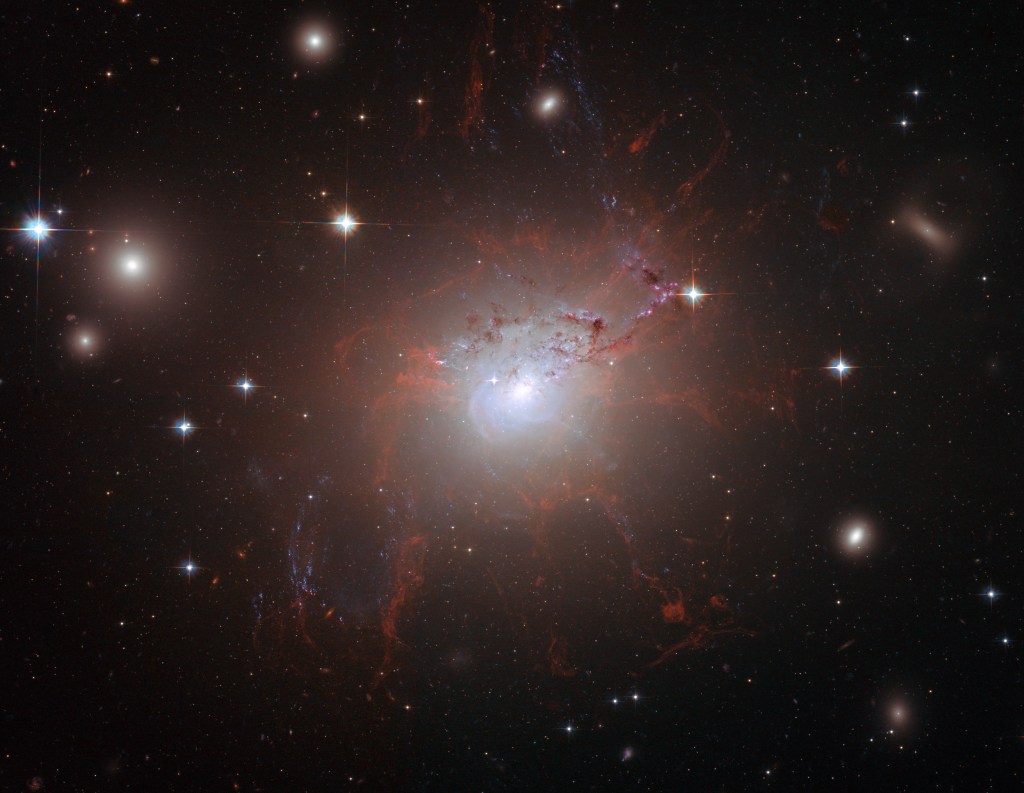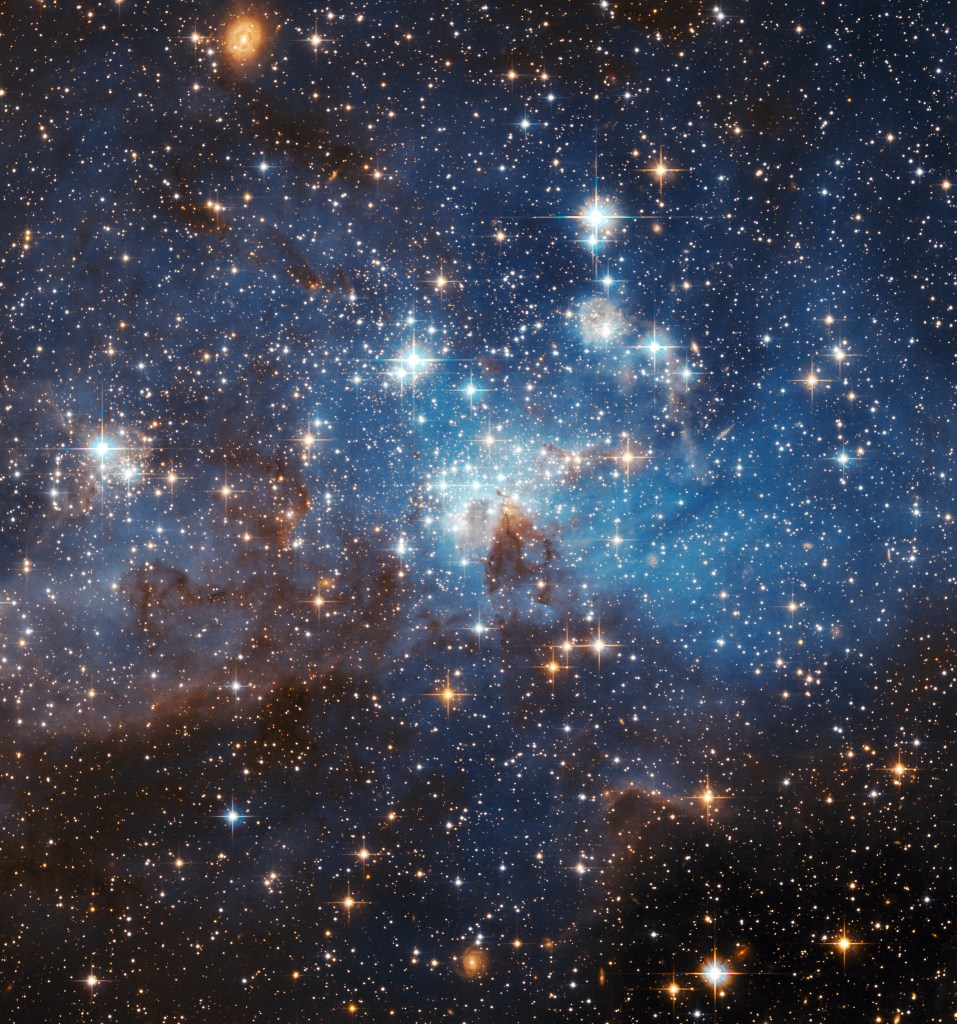Pointing Control System
Operating Hubble with Only One Gyroscope
The Hubble Space Telescope has a one-gyro mode that is part of its pointing control system and can be used in place of its normal three-gyro mode if four or five of its six gyros fail. This allows groundbreaking science to continue with some limitations.
Background
NASA’s Hubble Space Telescope has one of the most accurate pointing systems of any spacecraft. It captures light from distant objects billions of light-years away (one light-year is 5.88 trillion miles) that appear as specks a few pixels tall in the camera. Such observations require pinpoint accuracy and a fixed, steady gaze as Hubble speeds some 17,000 miles per hour (27,000 km/hour) around Earth. Hubble’s pointing and control system is equivalent to keeping a laser shining on a dime over 200 miles (320 km) away for however long Hubble takes a picture – up to 24 hours. Any movement beyond that level of accuracy would make the image blurry or throw Hubble off the target.
Hubble achieves such precision with an array of sensors that help determine where it is pointing. These include: sun sensors that identify the direction of the Sun relative to the spacecraft; magnetometers that calculate Hubble’s direction compared to Earth’s magnetic field, like a compass; star trackers that compare the stars in a portion of the sky to a star map to determine where Hubble is pointing; fine guidance sensors that lock onto selected “guide” stars near Hubble’s target and monitor if the spacecraft is moving off of them; and gyroscopes that determine if Hubble is turning, how fast, and in what direction.
What are Gyroscopes?
Gyroscopes, or gyros, use the principles of angular momentum, to determine the telescope’s motion and speed along its three axes: is it pitching up or down, yawing left or right, or rolling along the barrel? Each of Hubble’s six gyros holds a wheel spinning at a constant 19,200 revolutions per minute, creating angular momentum. Because the laws of physics require the conservation of angular momentum, when the telescope turns, it creates a force that causes the axis of the spinning wheel to tilt, moving it away from its original position. By measuring the displacement of the axis, we measure the force being applied to it by the turning spacecraft. The spacecraft uses this information to determine the velocity and direction it is turning.
You may have experienced this at a science center or in science class when someone had you hold a bicycle wheel by its axles and gave it a big spin. If you tried to tilt the spinning wheel, you would feel a force opposing your attempt. This force is similar to the one produced in Hubble gyros when Hubble turns.
The formal name of a Hubble gyro and its bundled electronics is Rate Gyro Assembly (see the image below). They are packaged in sets of two inside boxes known as Rate Sensor Units (see image at right). There are three Rate Sensor Units onboard Hubble.

How Does Hubble Use Gyroscopes?
Hubble has six gyroscopes but uses only three at a time, the others are reserved as backups. They are critical tools that allow engineers to determine Hubble’s movement in three-dimensional space. Gyros provide rotation information as Hubble turns from target to target: moving the telescope in small increments, centering an instrument’s field-of-view on the target, or tracking a moving object. They also help prevent Hubble from drifting away from its desired pointing direction.
Why Do They Fail?
Hubble gyros fail over time, usually because of “wear and tear” of thin (less than the width of a human hair), metal wires, called flex leads that carry power in, and data out, of the mechanism. Hubble’s flex leads pass through a thick fluid inside the gyro. Over time, the flex leads begin to corrode and can physically bend or break.
During its 33-year history, Hubble has had eight out of 22 gyros fail due to a corroded flex lead. The most notable instance came in October 1999, when the fourth of six gyros failed. This meant Hubble could no longer collect science data because the pointing system needed three active gyros. The spacecraft sat in safe mode waiting for a space shuttle servicing mission that installed six new gyros one month later.
Contingency Plans
Following the events of 1999, the Hubble team created a contingency plan in preparation for a time when the spacecraft might find itself with less than three working gyros again. The team developed a two-gyro mode that substitutes other sensors for one missing gyro. Although less efficient, two-gyro mode allows Hubble to continue collecting ground-breaking science data.
Two-gyro mode became useful in 2004 when the final planned Hubble servicing mission was canceled following the space shuttle Columbia disaster. With no servicing to replace failed gyros, the observatory was proactively put into two-gyro mode to prolong its life. During this time, the team also devised a one-gyro mode to further extend Hubble’s life if needed. While the difference between two-gyro mode and one gyro-mode is negligible, one-gyro mode provides the option to have one of the remaining gyros placed in reserve. After NASA developed techniques to mitigate the risks of flying another shuttle mission to Hubble, Servicing Mission 4 replaced all six gyros one last time in 2009.
Today three of the six gyros onboard Hubble have had a flex lead fail and are no longer functional. If another gyro fails, the team will invoke one-gyro mode.
How Does One-Gyro Mode Work?
One-gyro mode substitutes magnetometers, sun sensors, and star trackers for the failed gyros. It is a multi-step process that positions Hubble closer and closer to a target based on the accuracy of its sensors. The first step uses the magnetometers, sun sensors, and the remaining gyro to help point Hubble within 10 degrees of the target, allowing the more accurate fixed head star trackers to take over. The fixed head star trackers work with the remaining gyro to point the observatory within tens of arcseconds (1 arcsecond = 1/3600 of a degree) from the target, allowing the use of Hubble’s highly accurate fine guidance sensors. The fine guidance sensors then take over, finding their assigned guide stars in the sky, putting the observatory within 150 milliarcseconds (1 milliarcsecond = 1/3600000 of a degree) of the target. Those sensors may make further adjustments, which are determined by the science instrument(s) used in the observation, and move Hubble to within 20 milliarcseconds of the target center. The sensors then maintain unprecedented steady pointing of the telescope during the science observation.
Once Hubble is on target, the steadiness of the telescope in one-gyro mode is almost comparable to that of a full three-gyro complement. In fact, in 2021 operations moved to one-gyro mode for this steady, on-target pointing period when Hubble collects science data because one of the three remaining gyros can produce significant noise in its output signal. The gyro used during this phase is not the one with significant noise.
Hubble’s One-Gyro Mode
The Hubble Space Telescope has a “One-Gyro” contingency mode to continue science observations in the event of onboard hardware problems.
Limitations
Although one-gyro mode is an excellent way to keep Hubble science operations going, it does have limitations, which include a small decrease in efficiency (roughly 12 percent) due to the added time required to slew and lock the telescope onto a science target. As previously noted, prior to the use of the fine guidance sensors, fixed head star trackers position Hubble’s pointing closer to the target. If Earth or the moon block two of the fixed head star trackers’ fields of view, Hubble must move further along in its orbit until the star trackers can see the sky and its stars again. This process encroaches upon science observation time. Second, the additional time the fine guidance sensors take to further search for the guide stars adds to the total time the sensors use to complete the acquisition. Third, in one-gyro mode Hubble has some restrictions on the science it can do. For example, Hubble cannot track moving objects that are closer to Earth than the orbit of Mars. Their motion is too fast to track without the full complement of gyros. Additionally, the reduced area of sky that Hubble can point to at any given time also reduces its flexibility to see transient events or targets of opportunity like an exploding star or an impact on Jupiter. When combined, these factors may yield a decrease in productivity of roughly 20 to 25 percent from the typical observing program conducted in the past using all three gyros.
The End Result
Although one-gyro mode reduces Hubble’s observing efficiency and overall productivity and makes scheduling individual observations more difficult, it enables Hubble to capture the incredible images the world is familiar with and extends the expected lifetime of the pointing control system. Below are examples of images taken during Hubble’s time in two-gyro mode, which is similar in pointing and stability as one-gyro mode, leading up to the last servicing mission in 2009.
From the study of exoplanet atmospheres to black holes and dark matter, Hubble’s groundbreaking discoveries will continue thanks to the engineers and operators who developed this innovative way of pointing and steadying the telescope. In one-gyro mode, Hubble will continue to advance our understanding of the universe for years to come.
























